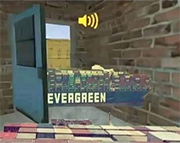|
1. I think it's reasonable to assume that the big cores are going to be hyperthreaded 2. the desktop parts have always had fewer EUs on their iGPUs than mobile parts, since desktop iGPUs are only expected to drive Windows
|
|
|
|

|
| # ? Jun 12, 2024 14:09 |
|
I wonder if "no hyperthreading on mobile SKUs" is going to be Intel's new segmentation/too lazy to fix cross-thread memory leak vuln tactic. Replace HT on the big cores with more little cores puttering away at 1 GHz or so to do all the background tasks while your big cores are free to just be burning away at max turbo for however long your laptop's lovely cooling solution can hold out. Heterogeneous computing is real fuckin cool and something I'm glad Intel is getting on board with. I have interest in it as a network guy who's fairly heavy into the software-defined networking world and would love to see appliances where all the potential user-facing tasks and the control plane are handled on the little cores and the big cores are solely dedicated to doing all the actual heavy lifting. One of my hobby projects is a networking OS that specifically uses a software-defined heterogenous multiprocessing architecture where the OS splits cores into kernel-mode hardware interfacing cores, kernel-mode compute cores, and user-mode management cores at startup based on the core layout bias in the startup config. Being able to just go "okay, the little cores are the management cores and run anything that could be turning arbitrary user-crafted data into network stack data" would make splitting up the big cores a much easier task.
|
|
|
|
Cygni posted:
.....Eugh. I'm not sure how dual performance cores on U parts makes me feel. I know it's not a dual-core part, there are those 4-8 additional small cores, but still. The illogical gut is bitching that this feels like going back to Pentium-Ds, even though the logical part of me wants to get my hands on a thin-and-light ASAP to test. I want to see what that i5 U9/U15 SKU can do.
|
|
|
|
SwissArmyDruid posted:.....Eugh. I'm not sure how dual performance cores on U parts makes me feel. I think having that many 2C+8c products in the stack is a bad call personally. Schedulers are going to want to massively prefer background tasks on little cores (since that's their purpose) and I have a feeling we're going to see a lot of machines where the two big cores are pegged at 100% and the little cores are pretty much doing nothing. If it's a power limit problem, then switching the 12-15W parts to 4C+8c+64EU makes them much more functionally attractive imo.
|
|
|
|
Cygni posted:
The 6C+8c+96EU part will be killer if they can fit it in the XPS13 at TDP-down. No 4C at 15w feels bad though. Going to really rely on the scheduler to make the big.little work. Looks like they're dropping the TDP-up on U series to 20w from 28w so they can distinguish higher wattage U chips. It makes sense as you can get an 1165g7 anywhere from 12w to 28w and the performance varies a lot. BurritoJustice fucked around with this message at 09:39 on Jul 9, 2021 |
|
|
|
Undocumented x86 instructions to control the CPU at the microarchitectural level in modern Intel processors.
|
|
|
|
|
What's the scoop on DDR5? Thinking about building a new PC later in the year, and it looks like that might be a thing with the new Intel CPUs. Figure it's safe to assume it's going to be spendy at first, but 
|
|
|
|
Rakeris posted:What's the scoop on DDR5? Thinking about building a new PC later in the year, and it looks like that might be a thing with the new Intel CPUs. We don't really know yet. Bandwidth is up, latency seems to be bad, costs seem to be high (for now), but how much that all matters is a mystery until something that uses it actually comes out. It looks like DDR5 will arrive on consumer desktops in Nov-Dec of this year, if Intel stays on track. I wouldn't really expect it to be much of a performance leap for desktop workloads or games, however.
|
|
|
|
The next generation of processors, Alder Lake / 12th gen for Intel and Ryzen 6000 (presumably) for AMD are targeted to support DDR5. DDR5 is going to require an all-new motherboard, because the design of the DIMM and its matching slot will be different. It's also likely going to have relatively high latency (compared to what you can do with DDR4 now) and will be much pricier. It's rumored, but not at all confirmed, that Intel and AMD may try to split the difference and allow their new CPUs to support both DDR4 and DDR5. You'd still need a new motherboard for the CPUs, but at least you're only buying the Alder Lake CPU and its matching mobo, and then you can reuse the DDR4 kit that you might already have, rather than having buy CPU+mobo+DDR5 RAM all in one go. It took something like 12 to 18 months for DDR4 to come down in price and for speeds and timings to improve, and we sort of expect something similar for DDR5. There isn't really any that needs DDR5 per se. If you need a computer for work or play in the short term, I wouldn't delay it just to see what DDR5 is about. If you were always going to wait anyway, then wait and see how it shakes out. I'm pretty confident that the value in being an early adopter isn't going to be there, but maybe we'll get a surprise.
|
|
|
|
Cool, thanks for the info, I was planning on waiting a bit for gfx card prices go hopefully get back to somewhat sane levels and then see what's up. I happened to read about the DDR5 stuff, and I figured I was waiting anyhow, might as well consider it. Will be interesting to see how it shakes out. Makes sense with the DDR4 I build my current PC right after it came out, and still running an i7 skylake, so paid the earlier adopter tax then, not sure it will be worth it again, but can always just switch out ram later I suppose.
|
|
|
|
Rakeris posted:What's the scoop on DDR5? Thinking about building a new PC later in the year, and it looks like that might be a thing with the new Intel CPUs. If DDR5 holds the same way as DDR2-DDR3 and DDR3-DDR4, ask again in 18 months. That seems to be about the point at which new memory standards overtake the old ones in terms of latency, price, and availability.
|
|
|
|
Are we expecting a big launch over this Fall and Holiday Season? With Windows 11 and Intel's Alder Lake being their first new architecture for quite a while, what should we see? Or is the chip shortage going to prevent this?
|
|
|
|
Rumor mill now has Alder Lake-S big cores clocking up to 5.3 GHz on samples. So probably once real bugs and/or fake hype are worked out, we'll probably be lucky to see 5.0
|
|
|
|
Woof. https://twitter.com/mattspencer_ee/status/1415913879490555904
|
|
|
|
Do two lovely fabs make one good fab
|
|
|
|
SCheeseman posted:Do two lovely fabs make one good fab
|
|
|
|
Oh hey, I just posted that over in the AMD thread. The worst part of all of this is that Mubadala is gonna come up smelling like roses, Intel will just settle the IBM lawsuit to avoid giving AMD their own leverage for a lawsuit, the Saudi government will continue to operate on oil money, and nothing will fundamentally change for another five to ten years, because that's how long it's going to take to modernize the facilities to whatever nanometer process.
|
|
|
|
There is plenty of lucre in side upgrading the older nodes. Things like IO chiplets don't need to be leading edge.
|
|
|
|
i don't think chasing the cutting edge of euv is anyone's plan for glofo. the world needs a lot more 28nm wafers than it does 5nm right now.
|
|
|
|
Dr. Fishopolis posted:i don't think chasing the cutting edge of euv is anyone's plan for glofo. the world needs a lot more 28nm wafers than it does 5nm right now. I was talking with a guy this morning about how his new Bronco, that he already has a down payment on, has been sitting otherwise completed in a warehouse since March waiting for a CPU.
|
|
|
|
MH Knights posted:I was talking with a guy this morning about how his new Bronco, that he already has a down payment on, has been sitting otherwise completed in a warehouse since March waiting for a CPU. Arguably a lot of automotive stuff doesn't need to be on 28 nm either (IMO)... at least most of the smaller, mixed-signal stuff is bigger processes. But, I guess if we're cramming A53s/R5s/R52 type cores everywhere, 28 is the only reasonable way to get it into smaller (Cheaper) packages.
|
|
|
|
I remember making small talk with an architect by deriding some what I thought was poo poo SoC that was repurposed and him telling me " who gives a poo poo about power draw its in a drat car no one cares about it" who gives a poo poo about power draw its in a drat car no one cares about it"
|
|
|
|
WhyteRyce posted:I remember making small talk with an architect by deriding some what I thought was poo poo SoC that was repurposed and him telling me " On an entirely unrelated note a lot of new cars have batteries fail extremely quickly these days.
|
|
|
|
I could see why Intel would want to buy glofo for foundry capacity. Building out new fab space and then having to fill it out with tools for older nodes would be a big waste. Some of the tools that are in the fabs already are older than I am, you'd have get spare parts off ebay or some warehouse since the company that made it isn't even around any more. Putting together a matched fleet of tools would be nearly impossible from scratch unless you buy new. So why spend a bunch of money to get new tools to make older nodes when you could just buy a fab with a bunch of tools for those nodes intead?
|
|
|
|
https://twitter.com/OneRaichu/status/1417527787695448069 For context: ST 5950X - 643 11900K - 623 10900K - 532 3950X - 523 MT 5950X - 10409 3950X - 9166 10900K - 6155 11900K - 5896 But also: https://twitter.com/OneRaichu/status/1417533774435262469
|
|
|
|
|
|
|
|
Holy poo poo
|
|
|
|

|
|
|
|
Those numbers are hella exciting but as someone that's probably only going to target an i5 I'm wondering how much of a perf upgrade it'd be to go from 6C Comet Lake to 6C/4c Alder Lake (and in relation to what AMD is going to offer)
|
|
|
|
movax posted:Arguably a lot of automotive stuff doesn't need to be on 28 nm either (IMO)... at least most of the smaller, mixed-signal stuff is bigger processes. But, I guess if we're cramming A53s/R5s/R52 type cores everywhere, 28 is the only reasonable way to get it into smaller (Cheaper) packages. i just threw out 28nm as an example, that's actually one of the densest nodes glofo does.
|
|
|
|
gradenko_2000 posted:Those numbers are hella exciting but as someone that's probably only going to target an i5 I'm wondering how much of a perf upgrade it'd be to go from 6C Comet Lake to 6C/4c Alder Lake Do we know if the Alder Lake lineup is hyperthreaded ok the big cores across the lineup? So is that 6C/4c a total of 12+4=16T?
|
|
|
|
Twerk from Home posted:Do we know if the Alder Lake lineup is hyperthreaded ok the big cores across the lineup? So is that 6C/4c a total of 12+4=16T? the leaks I've seen indicate: * the big cores are hyperthreaded * the little cores are not * the desktop i9 is going to be 8 big, 8 little, for a total of 24 threads (16 big threads, 8 little threads) * the i7 is going to be 8 big, 4 little * the i5-K is going to be 6 big, 4 little * the i5-non-K is going to be 6-big-only * the i3 is going to be 4-big-only
|
|
|
|
If thatís the case then 90% of newly purchased consumer gear probably wonít even have little cores. Pentium branded chips and i3s are still an enormous market share for Walmart laptop type machines, despite grandmaís facebook and words with friends machine really being a potential use case for delicious power-saving heterogeneous architecture.
|
|
|
|
Supposedly the mobile space is going to be 6C / 8c on the higher-end 4C / 8c on the mid-range 2C / 8c on the lower-end and 2C / 4c on the ultra-thin 9-15 watt range so there's still going to be a lot of leveraging of the heterogenous architecture on laptops but I do agree that if non-K i5's, i3's, and Pentiums don't have little cores at all then a lot of desktops won't even see the benefit
|
|
|
|
Do we know if, for example, an 8C8c CPU will show up as 16 physical cores that can all be scheduled on simultaneously, or are the big and little cores mutually exclusive? I think ARM big.LITTLE can work either way, with most designs being mutually exclusive but some (like Apples) exposing all the cores at once. repiv fucked around with this message at 03:33 on Jul 21, 2021 |
|
|
|
repiv posted:Do we know if, for example, an 8C8c CPU will show up as 16 physical cores that can all be scheduled on simultaneously, or are the big and little cores mutually exclusive? In ARM big.LITTLE machines, this is a both a hardware and software issue, and there are 3 possibilities: https://en.wikipedia.org/wiki/ARM_big.LITTLE#Run-state_migration I think all ARM hardware has implemented HMP (your first option, and the most "complete" view of a heterogenous processor) for a while now. On the software side, it's all been a non-issue for years on Linux -- driven by the use cases of phones and Chromebooks. But after watching the Windows scheduler cripple perfectly ordinary x86 CPUs because what do you mean a computer can have more than 4 cores, AMD?, I have no doubt Microsoft will balls-up this rather more complex issue in some hilarious way.
|
|
|
|
gradenko_2000 posted:Supposedly the mobile space is going to be I mean the biggest benefit to BIG.little is battery life, so my constant refrain on this topic with regards to desktop is "what benefit?" UPS crew represent I guess.
|
|
|
|
VorpalFish posted:I mean the biggest benefit to BIG.little is battery life, so my constant refrain on this topic with regards to desktop is "what benefit?" UPS crew represent I guess. Battery life is certainly part of it, but the other side of that coin is heat. We're talking about a consumer product line that already is struggling with heat generation, so if being able to shlep tasking off to low-power / high-efficiency cores lets you keep the CPU from cooking itself, well that's still a win for desktop use. It also (presumably) helps with cost: assuming that a little core is actually smaller and therefore cheaper to implement, something like a 6C/8c would get you more threads for the same price than going the traditional 8-10C route. For most users, you don't need every thread executing at max blast anyhow, so in-actual-use performance would still be comparable.
|
|
|
|
DrDork posted:Battery life is certainly part of it, but the other side of that coin is heat. We're talking about a consumer product line that already is struggling with heat generation, so if being able to shlep tasking off to low-power / high-efficiency cores lets you keep the CPU from cooking itself, well that's still a win for desktop use. It's only cheaper if you end up with a smaller chip overall than you would have with an all big design or you do chiplets/stacking and manufacture the little cores on a cheaper process (which comes with its own design costs). Any task you can shuffle off to a little core isn't going to push you even close to long duration power limits unless the little cores are a lot faster than I'm expecting. Any situation where you would traditionally be running in to thermal or power limits you're going to be fully loading the big cores and you'd probably be better off with 10 big cores say vs 6/8 in the same thermal envelope unless intel has a very different ratio of big:little per core performance than existing designs. Hypothetically, you're always better off with a single thread over 2 threads if the single thread is twice as fast. I'm very skeptical about thermal benefits under heavy load, and I'd bet on better absolute performance with an all big design assuming same die size on desktop in the same thermal envelope.
|
|
|
|

|
| # ? Jun 12, 2024 14:09 |
|
VorpalFish posted:I mean the biggest benefit to BIG.little is battery life, so my constant refrain on this topic with regards to desktop is "what benefit?" UPS crew represent I guess. In a desktop processor you still have a certain budget for thermals, power and chip size. You can fit 4 small cores in the same space as a single big core, so you're not comparing 8C+8c to 16C but to 10C. You might get more performance for the same power by clocking a smaller amount of cores much harder with extra small cores for certain tasks. It's all about optimising within your particular envelopes which is just good engineering. AMD just slaps a second 8C chip on the same package, also a good option.
|
|
|



































